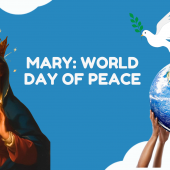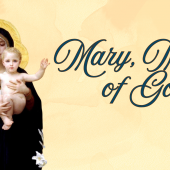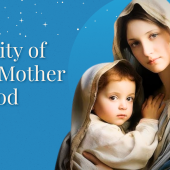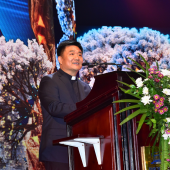The Assumption of Mary
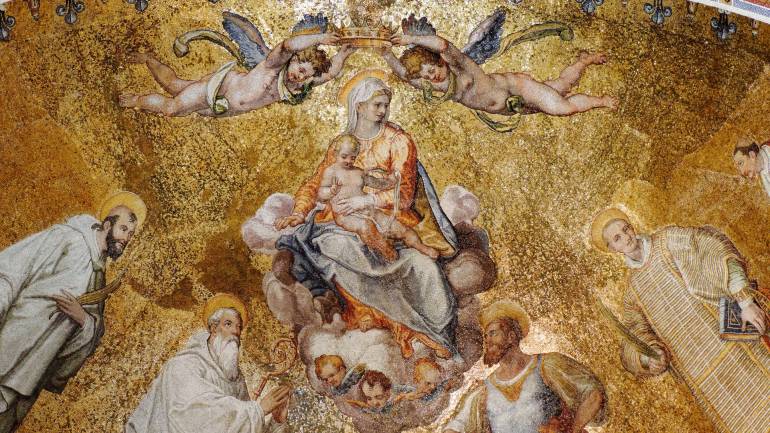
Before the dogma of the Assumption of Mary was solemnly declared by the venerable Pope Pius XII in 1950, a lot of anti-Marian non-Catholics complained and claimed that it’s wrong to proclaim or believe anything not explicitly taught in the Sacred Scriptures, pointing out that the Bible is silent about the assumption of Mary.
Regarding the queenship of Mary (Regina Caeli), which is the consequence of her assumption into heaven, the anti-Marian non-Catholics again complain and claim that there is no queen in heaven, but most certainly there is a King of Heaven, Jesus Christ, who alone rules—Christus vincit! Christus regnat! Christus imperat!—and does not share His throne or authority with anyone.
I intend to explain rather succinctly that the Catholic dogma of the Assumption of Mary is incomprehensible without an adequate understanding of her unique role in Salvation History, and that her role is clearly and explicitly taught in the Sacred Scriptures.
When we think of theology and all of its implications, we think of everything that has to do with God (Theo in Greek), including all of its arguments and counterarguments. These arguments and counterarguments are divided and subdivided into several related topics to think about, including Christology, or the theology centered on Christ, the Son of God and the second Person of the Blessed Trinity; Soteriology, or the theology of Jesus Christ as the Savior; Ecclesiology, or
For centuries, when the popes, bishops, and theologians—and the Catholic world—taught and argued about Mary’s role, function, or vocation in Salvation History, they drew attention to the role of Mary in Christology and her principal title, which is Theo-tokos, the Mother/bearer of God, a dogma declared by the Council of Ephesus in AD 431. They pondered on soteriology and conversed about her being the New Eve and the Mother of the Redeemer, but not Co-redemption, as Pope Francis has repeated in our time. She is known as the Mother of the Church (Mater Ecclesia) in ecclesiology because the hierarchy, theologians, and devotees remembered all of her titles, apparitions, and intercessions in history that the magisterium had formally declared.
Before 1950, just as the anti-Marian non-Catholics were protesting, the Christifideles, the People of God, were praying that the Assumption of Mary be officially declared as a dogma of faith. In the minds of many devotees, the Assumption of Mary is nothing else but the happy consequence of all the roles she played in Salvation History, which in the first place was strategically planned by YHWH GOD.
As always, the Church teaches that the Creator wanted the free cooperation of a creature to redeem humankind, and from all eternity, God chose "the mother of his Son a daughter of Israel, a young Jewish woman of Nazareth in Galilee, a virgin betrothed to a man whose name was Joseph, of the house of David; and the virgin's name was Mary'" (Catechism of the Catholic Church, 488; Luke 1:27).
God’s invitation to save mankind was closely linked to the personal decision of one woman set apart from all the rest. By consenting to the Divine call and conforming to the Divine will (Luke 1:38), fiat voluntas tua, Mary, a daughter of Adam, became the Theo-tokos. Heaven rejoiced as hell trembled in fear when the "Word was made Flesh" (John 1:14).
Since a pregnant virgin was unnatural or "beyond the ordinary," and therefore socially unacceptable in the Jewish society of her time, Joseph played a silent, albeit essential and crucial, role in God’s big plan. Yet, it remains always good news to those who believe, then and now, that a woman remains a virgin before, during, and after the birth of a child. This is known to us as perpetual virginity, which is one of the four Marian dogmas.
But perpetual virginity, though a most fascinating aspect of Mary’s vocation, is just an appendix to the most critical role she assumed in Salvation History, which is the reason why, in the first place, she was made perpetually a virgin. All-important and her most unique role is being Theo-tokos.
And what is the most important event in Mary's life that prepared her for a role as Theo-tokos? It’s her Immaculate Conception, yes, and that is being conceived without original sin. When Mary’s father, Saint Joaquim, and her mother, Saint Anne, produced her body by procreation, God directly created and infused Mary’s soul into the body at the precise moment of her conception in St. Anne’s womb, free from original sin.
In 1946, the venerable Pope Pius XII addressed all bishops, clergy, religious, and lay faithful (Christifideles) and asked something unique in Christianity: Whether the bodily assumption of Mary into Heaven could be defined as a proposition of faith.
After the Vatican received an overwhelming affirmative response, in November 1950, Pius XII infallibly promulgated the Apostolic Constitution Munificentissimus Deus, a dogmatic declaration that confirmed that "Mary, the immaculate perpetually Virgin Mother of God, after the completion of her earthly life, was assumed body and soul into the glory of Heaven."
Her assumption into heaven for both body and soul is a logical consequence of the Immaculate Conception. People pass away and their bodies degrade as a result of sin, but the Almighty God did not allow the body of the spotless mother of His Son to rot, degrade, or succumb to worms.
Because she gave birth to the only blameless Man, Mary had to be without sin herself. Her Immaculate Conception is God’s way of preparing Mary to assume her role of the Motherhood of God. Nine hundred years ago, St. Anselm of Canterbury (1033–1109) wrote about Mary:
"The world was corrupted and tainted by ORIGINAL SIN. Now, the whole universe rejoices with new loveliness. All creation has been restored to its splendor, through a woman named Mary…who is immaculately conceived. The woes of our first parents have been transformed into joy. God, in desiring to save the whole of humanity, fell in love with a woman, and prepared her to become the MOTHER OF HIS SON."
The womb that formed Jesus for nine months (Theo-tokos) was made spotless and, since she was spotless, her body was preserved from corruption after her earthly life.
What is the pastoral consequence for those of us who believe? The answer is this: Our human body’s destiny is anchored on the revealed truth of the bodily glorification of Jesus and Mary, in his splendid Resurrection and Ascension, and Mary’s glorious Assumption into Heaven.
The bodily glorification of the Blessed Virgin Mary in her Assumption is an anticipation of our bodily glorification: The resurrection of the body. Our mortal body will be transformed into an immortal one at the Second Coming of Christ.
O María, sin pecado concebida, ruega por nosotros que recurrimos a ti.
O Mary, conceived without sin, pray for us who have recourse to you.
*Dr. Jose Mario Bautista Maximiano is the Lead Convenor of the Love Our Pope Movement (LOPM) and the author of “Church Reforms – Semper Purificanda” Volume One (Claretian, 2023).
Radio Veritas Asia (RVA), a media platform of the Catholic Church, aims to share Christ. RVA started in 1969 as a continental Catholic radio station to serve Asian countries in their respective local language, thus earning the tag “the Voice of Asian Christianity.” Responding to the emerging context, RVA embraced media platforms to connect with the global Asian audience via its 21 language websites and various social media platforms.









